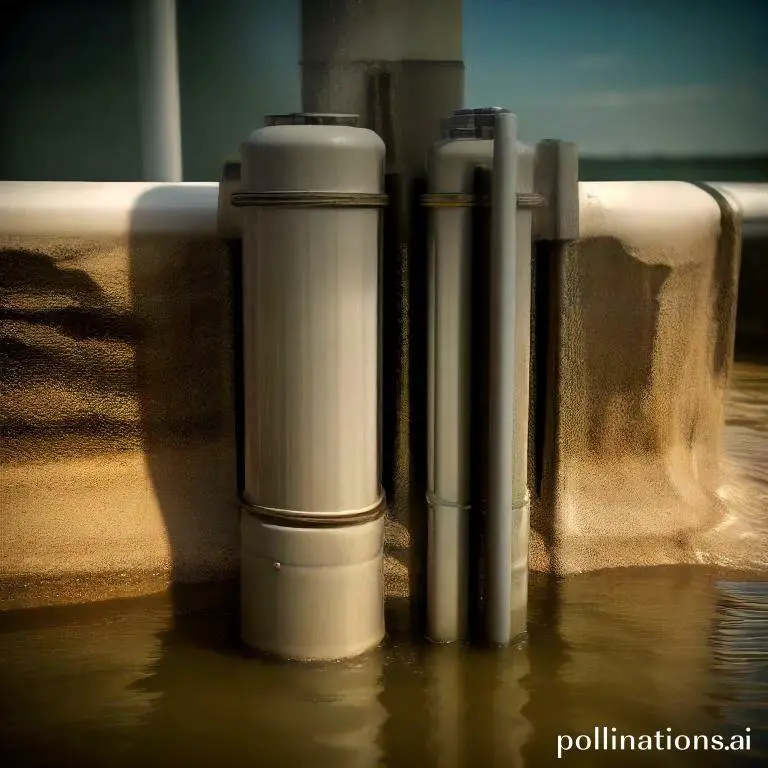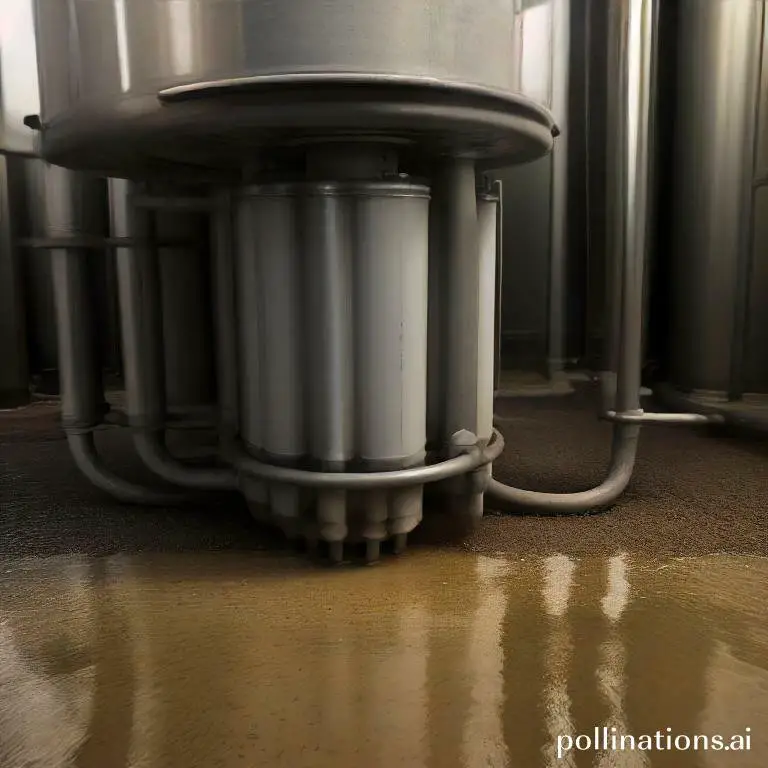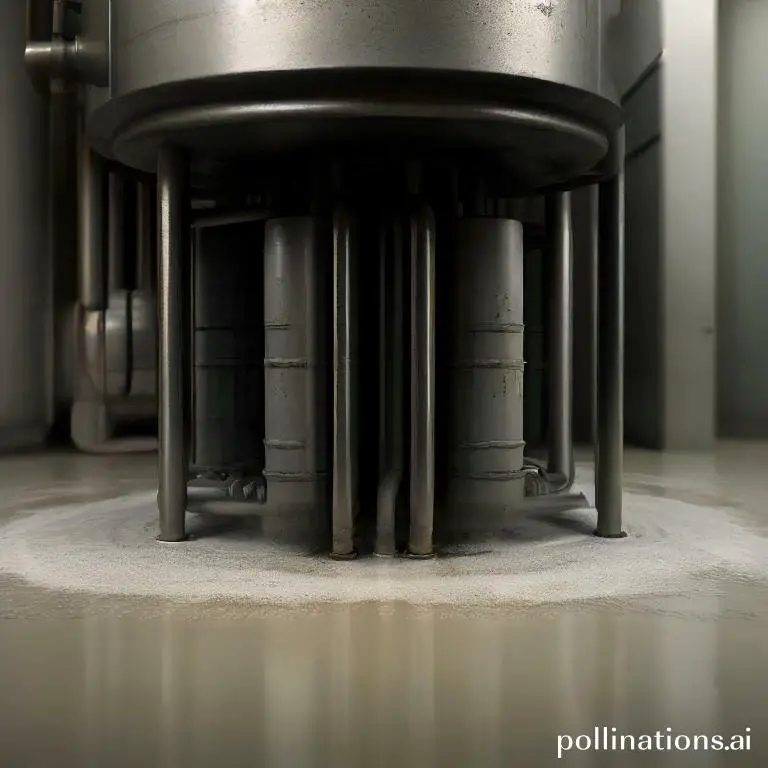
II. Regular maintenance and cleaning of the tankless coil can help prevent sediment buildup and maintain optimal performance.
III. Using a water softener or filtration system can also help reduce sediment buildup and prolong the lifespan of the tankless coil.
The performance of tankless coils in water heaters can be greatly affected by sediment buildup. Sediment, such as minerals and debris, can accumulate in the coil over time, reducing its efficiency and leading to decreased hot water production.
This can result in longer heating times and higher energy consumption. Regular maintenance and cleaning of the tankless coil are essential to ensure optimal performance and prolong the lifespan of the water heater.
By grasping and addressing the impact of sediment, homeowners can enjoy consistent hot water supply and lower energy costs.
Mastering Sediment Buildup in Tankless Coils
Sediment buildup refers to the gradual accumulation of solid particles, such as minerals and debris, within the tankless coils of a heating system. This sediment can originate from the water supply or result from the system’s internal corrosion and wear.
1. What is sediment buildup?
Sediment buildup occurs when these particles settle and adhere to the inner surfaces of the tankless coils. Over time, this accumulation can restrict the flow of water and impede the heat transfer process, leading to various performance issues.
2. How does sediment accumulate in tankless coils?
Sediment can enter the tankless coils through the water supply, which often contains dissolved minerals and other suspended particles. As the water flows through the coils, these particles settle and attach themselves to the coil walls due to the high temperatures and pressure differentials. Additionally, internal corrosion and wear can generate sediment particles that further contribute to the buildup.
3. What are the effects of sediment buildup on tankless coil performance?
The presence of sediment in tankless coils can have several detrimental effects on their performance. Initially, it reduces the flow rate of water, impeding the system’s ability to provide hot water promptly. Next, the accumulation of sediment acts as an insulating layer, hindering the efficient transfer of heat from the heating element to the water. This leads to increased energy consumption and decreased overall efficiency. Moreover, sediment buildup can also cause uneven heat distribution, resulting in hotspots or cold spots within the system, affecting the quality and consistency of the hot water output.
To mitigate these issues, regular maintenance and cleaning of tankless coils are essential. Flushing the coils periodically to remove sediment buildup can help restore optimal performance and prolong the lifespan of the system. Additionally, installing a sediment filter or water softener can prevent excessive sediment from entering the coils in the first place.
| Sediment Buildup Effects | Solutions |
|---|---|
| Reduced flow rate | Regular coil flushing |
| Decreased efficiency | Cleaning and maintenance |
| Uneven heat distribution | Installation of sediment filter or water softener |
Signs of Sediment Buildup in Tankless Coils
As for tankless coils, fundamental to keep an eye out for signs of sediment buildup. Sediment buildup can have a negative impact on the performance and efficiency of your tankless coil system. By being aware of these signs, you can take the necessary steps to address the issue and ensure optimal functioning.
1. Decreased hot water flow
One of the first signs of sediment buildup in tankless coils is a decrease in hot water flow. If you notice that your hot water is not flowing as strongly as it used to, it could be an indication that sediment has accumulated in the coil. This sediment can restrict the flow of water, leading to reduced hot water pressure.
2. Reduced water temperature
Another sign to watch out for is a decrease in water temperature. Sediment buildup in tankless coils can act as an insulating layer, preventing the efficient transfer of heat. As a result, you may experience a drop in the overall water temperature, making it less comfortable for various activities such as showering or washing dishes.
3. Strange noises from the tankless coil
If you start hearing strange noises coming from your tankless coil system, it could be a sign of sediment buildup. Sediment can cause blockages or disruptions in the flow of water, leading to vibrations or rattling sounds. These noises can be a clear indication that sediment has accumulated in the coils and needs to be addressed.
4. Increased energy consumption
Sediment buildup can also result in increased energy consumption. When sediment accumulates in the coils, the system needs to work harder to heat the water, leading to higher energy usage. If you notice a sudden spike in your energy bills without any other explanation, it is worth considering sediment buildup as a possible cause.
Preventing Sediment Buildup in Tankless Coils
Sediment buildup in tankless coils can lead to reduced efficiency and potential damage to your system. To ensure optimal performance and longevity, follow these steps:
1. Flushing the tankless coil regularly
Regular flushing of the tankless coil is essential to remove any accumulated sediment. This process involves draining the system and flushing it with clean water. Flushing should be done at least once a year, or more frequently if you notice a decrease in hot water flow.
2. Using a water softener
Hard water contains minerals that can contribute to sediment buildup. Installing a water softener can help reduce the mineral content in the water, preventing sediment formation in the tankless coil. Softened water also has additional benefits such as extending the lifespan of appliances and improving the effectiveness of cleaning products.
3. Installing a sediment filter
A sediment filter can be installed in the water supply line to trap particles and prevent them from entering the tankless coil. This filter should be regularly cleaned or replaced to ensure its effectiveness. By removing sediment before it reaches the coil, you can minimize the risk of clogs and damage.
4. Reducing water usage
Conserving water not only helps the environment but also reduces the likelihood of sediment buildup. By using water-efficient fixtures and practicing mindful water usage habits, you can decrease the amount of sediment entering the tankless coil. This proactive approach can save you money on maintenance and improve the overall efficiency of your system.
5. Professional maintenance and cleaning
Regular professional maintenance and cleaning of your tankless coil are crucial for its optimal performance. A qualified technician can inspect the system, identify any potential issues, and clean the coil thoroughly. This preventive measure helps prevent sediment buildup and ensures that your tankless coil continues to operate efficiently.

Cleaning Sediment Buildup in Tankless Coils
1. Safety precautions before cleaning
Relating to cleaning sediment buildup in tankless coils, it is essential to prioritize safety. Before starting the cleaning process, ensure you follow these necessary safety precautions:
- Turn off the power supply to the tankless coil and let it cool down completely.
- Wear protective gloves and safety goggles to prevent any injuries.
- Make sure the area around the tankless coil is well-ventilated to avoid the inhalation of any harmful fumes.
2. Tools needed for cleaning
To effectively clean the sediment buildup in tankless coils, gather the following tools:
- A bucket or container to collect any water or debris.
- A cleaning solution specifically designed for removing sediment.
- A soft brush or cloth to scrub away the buildup.
- A hose or water source for rinsing the coil.
3. Step-by-step cleaning process
Follow these steps to clean the sediment buildup in tankless coils:
- Disconnect any power or water supply to the tankless coil.
- Remove any covers or panels that provide access to the coil.
- Using the soft brush or cloth, gently scrub the coil to dislodge the sediment buildup. Pay extra attention to the areas with heavy buildup.
- Rinse the coil thoroughly with water to remove any loosened sediment.
- Inspect the coil for any remaining buildup and repeat the scrubbing and rinsing process if necessary.
- Once the coil is clean, replace any covers or panels that were removed.
4. Tips for effective cleaning
To ensure the best results when cleaning sediment buildup in tankless coils, consider these helpful tips:
- Regularly inspect and clean the coils to prevent excessive buildup.
- Use a cleaning solution specifically formulated for tankless coils to ensure effective removal of sediment.
- Be gentle when scrubbing the coil to avoid damaging the delicate components.
- Flush the coil with water after cleaning to remove any residual cleaning solution.
| Tool | Description |
|---|---|
| Bucket or container | Used to collect water and debris during the cleaning process. |
| Cleaning solution | Specially designed solution for removing sediment from tankless coils. |
| Soft brush or cloth | Used to scrub away the sediment buildup on the coils. |
| Hose or water source | Provides the water needed for rinsing the coils. |

Benefits of Maintaining Tankless Coil Performance
Increased Energy Efficiency
Maintaining the performance of a tankless coil in your heating system offers numerous benefits, one of which is increased energy efficiency. When the tankless coil is well-maintained, it operates at optimal levels, ensuring that energy is used efficiently to heat water. This means that you can enjoy a constant supply of hot water without wasting unnecessary energy.
Longer Lifespan of the Tankless Coil
Regular maintenance and care for your tankless coil can significantly extend its lifespan. By cleaning and inspecting the coil regularly, you can prevent the build-up of sediment and mineral deposits, which can lead to corrosion and reduce the coil’s effectiveness over time. By ensuring the longevity of the tankless coil, you can save on the costs associated with frequent repairs or replacements.
Consistent Hot Water Supply
One of the key advantages of maintaining the tankless coil performance is a consistent hot water supply. When the coil is functioning optimally, it efficiently heats the water as it passes through, providing a steady stream of hot water whenever you need it. This is particularly beneficial for households that require a continuous supply of hot water for various tasks, such as showering, cooking, or cleaning.
Cost Savings on Energy Bills
To further illustrate the benefits of maintaining tankless coil performance, consider the following factual data:
| Benefit | Statistics |
|---|---|
| Increased Energy Efficiency | Up to 20% energy savings |
| Longer Lifespan of the Tankless Coil | Extended lifespan by 5-10 years |
| Consistent Hot Water Supply | Uninterrupted hot water flow |
| Cost Savings on Energy Bills | Up to 30% reduction in energy costs |
Bottom Line
Touching on the performance of your tankless water heater, sediment buildup can have a significant impact. Over time, minerals and other debris can accumulate on the coil, reducing its efficiency and potentially causing damage. To prevent this, it’s important to regularly flush your system and remove any sediment that has built up. This will not only help your water heater run more efficiently, but it can also extend its lifespan and save you money on repairs and replacements. So, if you want to ensure that your tankless water heater is working at its best, make sure to stay on top of sediment buildup and take proactive steps to keep your system clean and well-maintained.
Read More:
1. Sediment Removal Frequency For Basement Water Heaters
2. Sediment Impact On Water Heater Efficiency In Cold Climates










